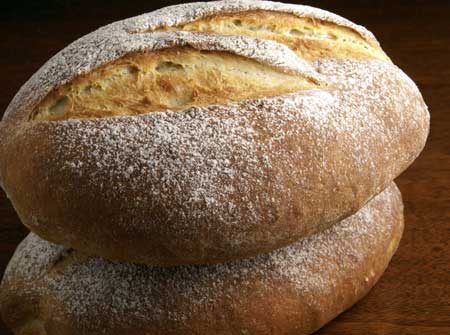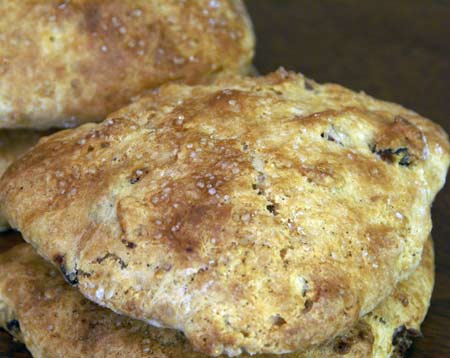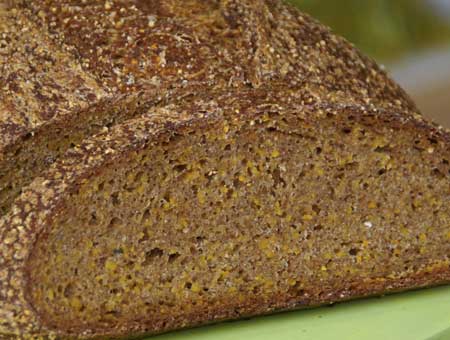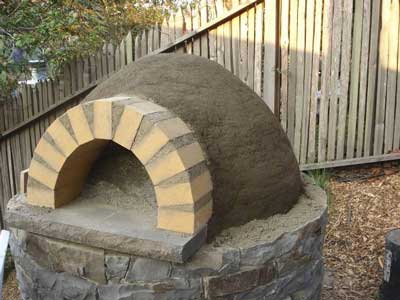
Salt is generally considered to be one of the four basic ingredients in bread (along with flour, water, and yeast). It contributes to flavor, of course, but also reinforces the gluten structure, controls (by slowing) the rate of fermentation, inhibits the oxidation that breaks down color- and flavor-enhancing pigments, and enhances the keeping quality of the bread. A dough without salt is likely to be sticky, slack, and hard to work with, and the resulting bread lacking in flavor and shelf life.
That said, there is one bread that is typically made without salt: Tuscan bread. The reason for the saltlessness is unclear; some sources say tha centuries ago, the government levied a hefty tax on salt that the Tuscans didn’t want to pay. Whatever the reason, the strong flavors of Tuscan cuisine are well-suited to a less strongly-flavored bread. This type of bread, which stales quickly, is apparently traditional for panzanella (tomato-bread salad).
For my first attempt at saltless bread, I adapted the Tuscan Bread recipe in Peter Reinhart’s The Bread Baker’s Apprentice. This version was interesting to me because it employs a technique in which a portion of the flour is mixed with boiling water into a paste the night before baking. This gelatinizes the starches in the flour, Renhart explains, which brings out distinct flavors that enhance the bread’s unique quality. The Tuscan Bread recipe in The Village Baker by Joe Ortiz includes a similar paste, which Oriz refers to as the bouillie (mush).



